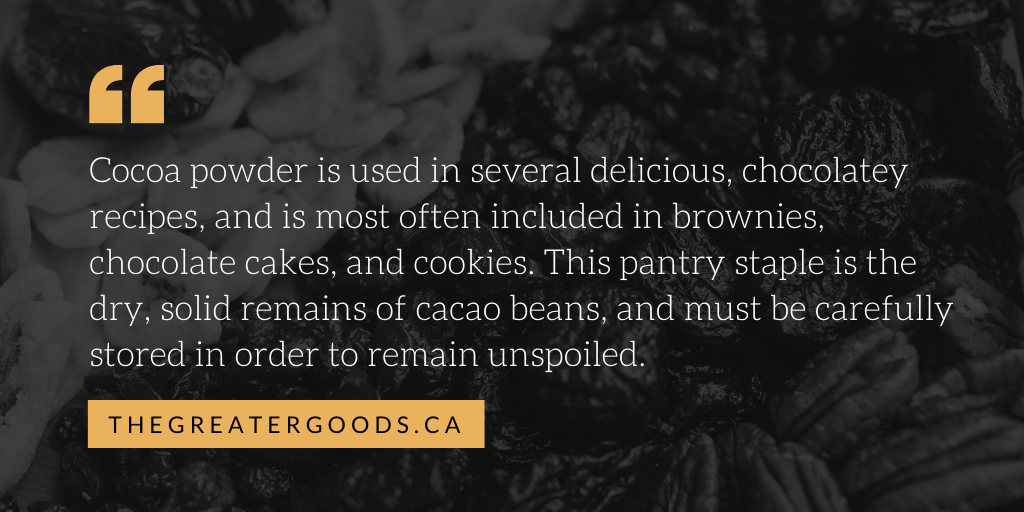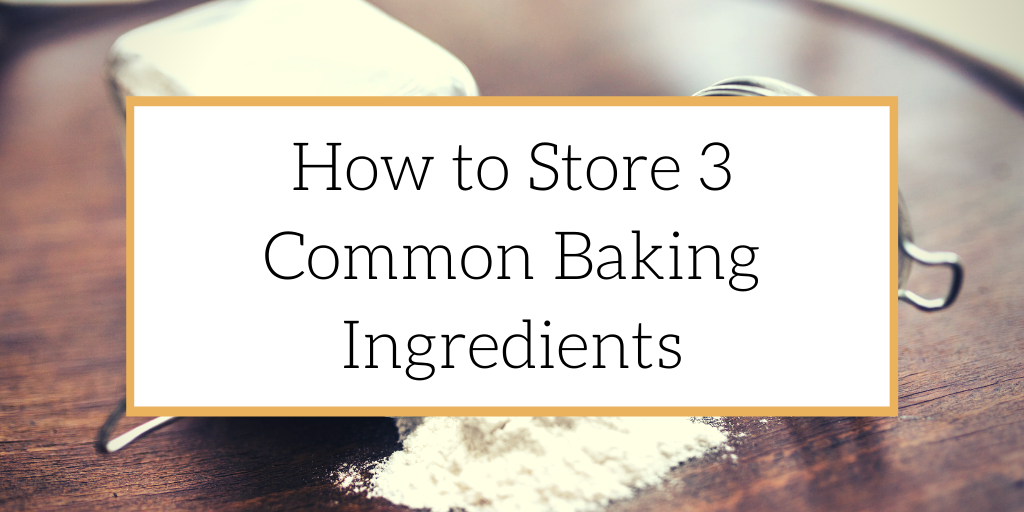While most common baking ingredients generally have a shelf life of 3-8 months, many of us find ourselves disposing of a bag of flour much earlier than expected. This is often due to the presence of unwanted pests and unusable clumps, which are caused by improper storage. And just as each of our favorite baking ingredients have different purposes, they also have slightly different storage and shelf-life requirements. In this article, we take a look at how to store 3 common baking ingredients, so you can get the most out of these pantry staples.
How to Store Flour
Flour is a staple in most pantries and is arguably the most essential baking ingredient out there. There is nothing worse than opening up a partially used bag of flour when you really need it, only to immediately throw it out due to some creepy, crawly critters that have burrowed themselves in there.
Taste of Home explains how to properly store your flour so you can avoid this startling find:
“To keep flour as fresh as possible, follow these simple steps. First, when you get home from the grocery store, pop your new bag of flour into the freezer. Leave it there for two days. That’ll kill off any weevils or eggs that may already be in the flour. (Here’s how to get rid of pests in the pantry.) After 48 hours, transfer the flour out of the bag and into an airtight container. A plastic storage container with a tight lid is ideal, but a large Ziploc bag is totally fine, too. The impermeable container will keep out pests as well as moisture.”
How to Store Cocoa Powder

Cocoa powder is used in several delicious, chocolatey recipes, and is most often included in brownies, chocolate cakes, and cookies. This pantry staple is the dry, solid remains of cacao beans, and must be carefully stored in order to remain unspoiled.
Canitgobad.net gives us their recommendations on storing cocoa powder:
“Cocoa powder should be stored in a cool, dry place in a tightly sealed container. Restricting exposure to moisture, heat, and oxygen is important to keep the cocoa powder from spoiling. While for most people, storing cocoa powder in the refrigerator is unnecessary, if you live in a very hot climate, this may be the best option. Be sure that the container powder is tightly sealed while in the refrigerator to prevent any excess moisture from coming in contact with the cocoa powder. Moisture will promote mold growth, even in the cold environment.”
How to Store Baking Powder
Baking powder is an absolute necessity for increasing the volume as well as lightening the texture of baked goods, and an item you do not want to be caught without while baking! This is a low maintenance staple to keep and can be safely kept in its original container (unless buying in bulk!).
Dixie Crystals give their advice on the proper and improper places to store baking powder:
“Baking powder can be stored in its original packaging in the pantry or a dark and cool cupboard. Just make sure the lid is shut tightly. Storage in a refrigerator or freezer is not recommended. The condensation in the fridge can make the powder react in the can. To test your baking powder for freshness, mix ½ tsp. with ¼ c. water. It will bubble if still fresh.”
Here at The Greater Goods, we offer consultation services for your business, from food production to distribution. If you’re looking for advice on how to get up and running, we offer a free consultation with our expert food industry consultants and food brokers.
